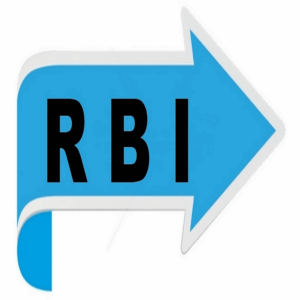
RBI Cracks Down on Digital Lending Apps: New Rules Allow UPI Users to Spend Freely!
Contents
RBI New Rules
RBI Cracks Down on Digital Lending Apps: New Rules Allow UPI Users to Spend Freely!


Reserve Bank of India (RBI) Governor Shaktikanta Das announced new measures aimed at enhancing the regulatory framework for digital lending apps (DLAs) and expanding the scope of Unified Payments Interface (UPI) transactions.
Digital Lending App Measures: In response to growing concerns about unauthorized and fraudulent digital lending apps, the RBI has introduced the formation of a public repository for DLAs. This repository will list all digital lending apps approved by RBI-regulated entities, providing transparency and helping consumers avoid uncertified apps. Regulated entities are required to provide and regularly update the details of their digital lending apps in this repository to ensure compliance and safeguard consumer interests.
UPI Enhancement: The RBI has introduced a new feature under UPI called “delegated payments.” This allows a primary user to authorize another individual to conduct UPI transactions on their behalf, even if the secondary user does not have their own bank account linked to UPI. This move is expected to make UPI transactions more accessible and flexible.
Additionally, the RBI has proposed raising the limit for tax payments through UPI from ₹1 lakh to ₹5 lakh per transaction. This adjustment aims to simplify and facilitate higher-value tax payments through UPI, making the process more efficient for users.
Economic Outlook: In its recent meeting, the RBI decided to keep the benchmark repo rate unchanged at 6.5%. The central bank has projected real GDP growth of 7.2% for the financial year 2024-2025, reflecting a stable and optimistic economic outlook.
These measures are part of the RBI’s ongoing efforts to strengthen the financial system’s integrity and improve user convenience in the digital space. For further updates and details, the RBI’s official announcements and the public repository will be valuable resources.


Advantages
- Enhanced Consumer Protection: The public repository for digital lending apps will help consumers avoid unauthorized or fraudulent apps, improving overall consumer safety and trust.
- Increased Flexibility in UPI Transactions: The “delegated payments” feature allows greater flexibility in UPI transactions, making it easier for individuals to manage transactions on behalf of others.
- Simplified Tax Payments: Raising the UPI tax payment limit will simplify and facilitate higher-value transactions, making tax payments more convenient for users.
- Stable Economic Outlook: The RBI’s decision to keep the repo rate unchanged and its optimistic GDP growth projection reflect a stable and positive economic outlook.
Disadvantages
- Potential for Misuse: While the public repository aims to address unauthorized apps, there is a risk that some users might still be deceived by sophisticated fraudulent schemes.
- Complexity for Users: The new UPI feature, while beneficial, might introduce additional complexity for users unfamiliar with the process of delegating payments.
- Impact on Financial Institutions: The enhanced scrutiny and regulatory requirements for digital lending apps could increase compliance costs for financial institutions.
- Economic Uncertainty: Despite positive growth projections, economic uncertainties and global market conditions could impact the actual realization of the projected GDP growth.


Conclusion
The RBI’s latest announcements represent significant steps towards improving financial system transparency and user convenience. By introducing a public repository for digital lending apps and expanding the functionality of UPI transactions, the RBI aims to enhance consumer protection and streamline digital payment processes. While these measures offer several advantages, including increased safety and flexibility, they also come with potential drawbacks such as the risk of misuse and increased complexity for users. Overall, these changes are expected to strengthen the financial ecosystem, ensuring a more secure and efficient experience for all stakeholders. As the RBI continues to adapt its policies to the evolving financial landscape, the effectiveness of these measures will become clearer in the months ahead.
FAQs
- What are the new measures introduced by the RBI regarding digital lending apps?
- The RBI has introduced a public repository for digital lending apps. This repository will list all apps approved by RBI-regulated entities, helping consumers identify and avoid unauthorized or uncertified apps.
- What is the new feature introduced under UPI?
- The new feature, “delegated payments,” allows a primary user to authorize another person to conduct UPI transactions on their behalf, even if the secondary user does not have their own bank account linked to UPI.
- How has the UPI tax payment limit changed?
- The limit for tax payments through UPI has been proposed to increase from ₹1 lakh to ₹5 lakh per transaction.
- What is the RBI’s current benchmark repo rate?
- The RBI has kept the benchmark repo rate unchanged at 6.5%.
- What is the projected real GDP growth for the financial year 2024-2025?
- The RBI has projected a real GDP growth of 7.2% for the financial year 2024-2025.
RBI New Rules
MHADA Lottery 2024 Mumbai





















1 comment